- There are no more items in your cart
- Shipping Calculated at checkout
- Sub-Total (inc. VAT) £0.00
Need Help?
Fire Resistant Boards
Buy fire-resistant boards at Rawlins Paints, designed to prevent the spread of fire & smoke through openings in fire rated walls & floors with multiple installed building services.
If you require more help to find and specify fire protection for your project or contract, our technical team are always on hand to advise. Give us a call on 0113 2455450 (option 2) or send a message to [email protected].
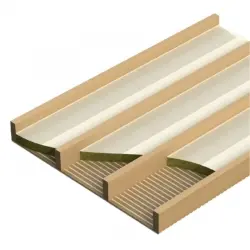
Nullifire FB770 Intudeck
Rock mineral fibre board coated with smoke and fire resistant sealant, provides up to 90 minutes fire resistance under timber floors and is ideal for installing above ceilings that can't be disturbed, such as decorative or made from lath and plaster.1200 x 600 x 70 mm sizeContact our sales team on 0113 2455450 if custom sizes required...
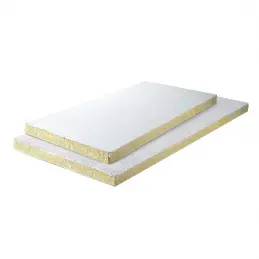
Astroflame PFP Fire Resistant Boards
Designed to prevent the spread of fire and smoke through openings in fire rated walls and floors where openings are formed to allow the installation of multiple building services. Coated both sides, all raw edges need to be coated with Astro PFP FR Coating. Astroflame PFP FR Board Coating or Astroflame Intumescent PFP FR Acrylic Sealant must...

Protecta FR Board
High-density stone wool fire protection board with Protecta FR Coating. Suitable for use in fire-rated walls and floors, linear seals, penetration seals, partition walls, and barriers under raised floors. Provides exceptional fire resistance, classified for EI ratings up to 240 minutes, meeting EN 1366-3, -4, and -12 standards. Offers...
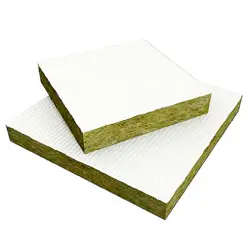
SikaSeal-626 Fire Board
A mineral wool based protection board coated with the fire resistant, ablative coating Sikacryl-625 Fire on both sides providing up to 4 hours fire resistance for sealing a wide range of service penetrations.For face fit (pattress-fit) and internal-fit installations Can be used for penetrations up to 1200 x 730 mm Provides acoustic...
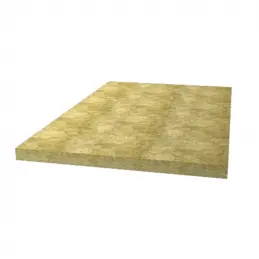
Rockwool Beamclad System
Manufactured using high performing, noncombustible stone wool insulation, specially designed to provide fire protection to structural steel for periods of up to 4 hours.Offers contractors simple and economical fire protection solutions to the very real diversity of modern steel constructions Available in a plain or foil faced finish,...
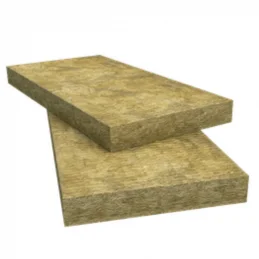
FSi RW4 Stonewool Acoustic Board
Versatile building slabs for a wide range of general building applications, for thermal, acoustic and fire resistant insulation in general building applications.Excellent thermal, acoustic and fire insulation Non-combustible – Euroclass A1More Information Delivery Info
Need Help?
Need Help?
Fire Resistance and Building Performance
Fire resistance in the context of building materials, particularly fire-resistant boards, involves multiple layers of protection to ensure that a structure can withstand the effects of fire long enough to allow for safe evacuation and effective firefighting. The performance of fire-resistant boards is quantified based on standardised testing that measures how well they maintain their structural integrity, prevent the spread of flames, and limit heat transfer.
Load Bearing Capacity:
Structural Integrity
Fire-resistant boards are crucial in maintaining the load bearing capacity of structural elements like steel beams and columns. During a fire, these boards prevent the rapid rise in temperature that could lead to the weakening or collapse of these critical components. Steel, for instance, loses about 50% of its strength at approximately 500°C, and without protection, it can fail catastrophically during a fire.
Types of Applications
Fire-resistant boards are used in a variety of applications, including the cladding of structural steel, concrete, and timber. Each material responds differently to fire: steel can warp and fail when it reaches critical temperatures, concrete can spall and lose its load bearing capacity, and timber, though it chars predictably, can eventually be consumed by fire. Boards are designed to delay these processes, thus extending the time before failure occurs.
Integrity:
Compartmentation
Fire-resistant boards are integral to the creation of fire compartments within a building. These compartments are designed to contain fire within a specific area, preventing it from spreading horizontally or vertically to other parts of the building. The boards used must maintain their integrity under fire conditions, meaning they must not allow flames, hot gases, or smoke to pass through any cracks, gaps, or joints.
Penetrations
One of the biggest challenges in maintaining the integrity of a fire compartment is dealing with penetrations, such as those for pipes, ducts, and cables. Fire-resistant boards are used around these penetrations, often in combination with other fire-stopping materials, to ensure that the integrity of the fire compartment is not compromised. These systems are rigorously tested to ensure that they can withstand the same level of fire exposure as the walls or floors in which they are installed.
Insulation:
Thermal Barrier
Fire-resistant boards also provide thermal insulation, which is essential to prevent the transfer of heat from the fire-exposed side to the unexposed side of a barrier. This is critical in preventing secondary fires on the unexposed side, where materials might ignite due to radiant heat. The boards are designed to limit temperature increases on the unexposed side to ensure that the fire does not spread through heat transfer alone.
Critical Applications
In applications like separating walls between rooms, especially those adjacent to high-risk areas (such as storage rooms with flammable materials), fire-resistant boards are used to ensure that the temperature on the non-fire side remains low enough to prevent ignition of any combustibles in close proximity.
Passive Fire Protection
Passive Fire Protection (PFP) refers to building features that are designed to prevent the spread of fire and smoke without requiring activation or human intervention. Fire-resistant boards are a central component of these systems, which are critical in maintaining the structural integrity of a building during a fire and protecting escape routes.
Compartmentation:
Function
Fire-resistant boards are used to create fire-rated walls, floors, and ceilings that divide a building into fire compartments. Each compartment is designed to contain a fire for a specified period (e.g., 30, 60, 90, or 120 minutes), thereby preventing the spread of fire and smoke to other parts of the building. This compartmentation is crucial for protecting building occupants and providing safe routes for evacuation.
Material Selection
The selection of fire-resistant boards for compartmentation depends on the required fire rating, the type of building, and the expected fire load. For instance, in high-rise buildings or buildings with high occupancy, the fire resistance rating may be higher due to the increased risk and the need for longer evacuation times. Boards with higher fire ratings are used in these cases to ensure that the compartments remain intact for the required duration.
Fire Doors and Fire-Resisting Glazing:
Fire Doors
Fire-resistant boards are often used as a core material in fire doors, which are designed to prevent the spread of fire and smoke through doorways. These doors are tested as part of a complete door assembly, including the frame, hardware, and any glazing, to ensure that they can maintain their integrity, insulation, and load bearing capacity during a fire. The use of fire-resistant boards in these doors helps them achieve the necessary fire rating, whether it’s 30, 60, or 120 minutes.
Fire-Resisting Glazing
In some applications, fire-resistant boards are used in combination with fire-resisting glazing systems. These systems allow for visibility and light transmission while still providing the necessary fire resistance. The boards may be used as part of the framing or backing structure to support the glazing and prevent fire spread through glazed areas.
Building Envelope:
External Wall Systems
Fire-resistant boards are also used in the construction of external wall systems, particularly in high-rise buildings. These boards are used behind cladding systems to prevent the spread of fire along the exterior of the building. This is especially important in light of recent fire disasters, which have highlighted the need for effective fire barriers in external wall systems.
Curtain Walling and Cladding
Fire-resistant boards in curtain walling systems provide a barrier that prevents fire from spreading between floors via the building’s exterior. This helps to contain the fire within the compartment of origin and prevents it from spreading vertically along the facade.
Active Fire Protection
Although fire-resistant boards are part of the passive fire protection strategy, they often work in tandem with active fire protection systems to enhance overall fire safety.
Integration with Active Systems:
Fire-Resistant Ducts and Shafts
Fire-resistant boards are used in the construction of fire-resistant ducts and shafts that house critical building services like HVAC systems, electrical wiring, and communication cables. These ducts and shafts are designed to prevent the spread of fire and smoke through the building’s service routes. When integrated with smoke control systems or fire suppression systems, the fire-resistant boards ensure that these ducts remain functional during a fire, maintaining the integrity of the active fire protection system.
Fire Alarm and Suppression Systems
Fire-resistant boards are also used to protect the infrastructure that supports active fire protection systems. For example, boards might be used to enclose fire alarm cables or sprinkler pipes to ensure that they remain operational during a fire. This is critical in ensuring that the active systems can perform their intended function without being compromised by the fire.
Fire Testing, Assessment, and Certification
Fire-resistant boards must undergo rigorous testing and certification to ensure that they meet the necessary standards for fire safety. This process is essential for verifying that the boards will perform as expected in real fire scenarios.
Fire Testing:
Testing Procedures
Fire-resistant boards are tested under standardised conditions that simulate real fire scenarios. The tests are designed to measure the board’s ability to maintain load bearing capacity, integrity, and insulation under fire conditions. Common tests include the BS 476 series (for UK standards) and EN 13501-1 (for European standards). These tests are conducted in specialised fire testing facilities, where the boards are exposed to controlled fire conditions for a specified period.
Test Configurations
Boards are tested in the configurations in which they will be used in actual construction, such as part of a wall, ceiling, or floor assembly. The results of these tests determine the fire rating of the boards, which is expressed in terms of minutes (e.g., 30, 60, 90, or 120 minutes). This rating indicates how long the boards can maintain their fire resistance properties under test conditions.
Certification:
Third-Party Certification
Certification provides independent verification that fire-resistant boards meet the required standards and regulations. Third-party certification is often required for boards to be used in certain applications, particularly in public buildings or high-risk environments. Certification bodies evaluate the test results and the manufacturing process to ensure consistent quality and performance.
Importance of Certification
Certified products are preferred in the construction industry because they provide assurance of reliability and compliance with fire safety regulations. For example, a third-party certified board might be required for use in high-rise buildings or in critical infrastructure where the consequences of fire spread could be catastrophic.
Assessment and Expert Judgment:
Supplemental Assessments
In addition to standard fire testing, fire-resistant boards may undergo assessments by fire safety experts. These assessments are important when the boards are used in unique or non-standard applications where direct testing might not cover all possible scenarios. Experts assess the suitability of the boards based on the available test data and their knowledge of fire behaviour.
Expert Judgement
Expert judgement is often used to extend the applicability of test results, such as applying the results of a standard fire test to a similar but untested configuration. This process involves careful analysis of the test data and an understanding of how the boards are likely to perform under different conditions. Expert judgement is especially important in ensuring that the fire protection strategy is comprehensive and effective across all potential scenarios.
Fire Retardant Impregnation and Coating Systems
Fire-resistant boards can be treated with fire retardant chemicals or coatings to enhance their fire performance. These treatments are particularly important for wood-based boards, which are naturally more combustible than other materials.
Surface Coatings:
Intumescent Coatings
These coatings are designed to react to the heat of a fire by swelling up and forming a char layer. This char acts as an insulating barrier that slows down the spread of fire and reduces the heat transfer to the underlying material. Intumescent coatings are often applied to fire-resistant boards used in structural applications, such as protecting steel beams and columns, or in enhancing the fire performance of timber boards.
Ablative Coatings
Ablative coatings work by absorbing heat and releasing gases that interfere with the combustion process. These coatings are less common than intumescent coatings but are used in specialised applications where the primary goal is to disrupt the chemical reactions that sustain a fire. Ablative coatings can be applied to fire-resistant boards in high-risk areas where rapid fire growth is a concern.
Impregnation Treatments:
Deep Penetration
Impregnation involves infusing fire-resistant boards with fire retardant chemicals under controlled conditions. This process ensures that the chemicals penetrate deep into the material, providing long-lasting fire resistance even if the surface is damaged. Impregnation is particularly effective for wood-based boards, which can be treated to achieve higher fire resistance ratings than untreated wood.
Durability
One of the advantages of impregnation treatments is that they provide consistent fire resistance throughout the thickness of the board. This is particularly important for boards that might be exposed to wear and tear, as the fire-resistant properties are not limited to the surface. Impregnated boards are often used in high-traffic areas or in environments where abrasion or damage to the surface is likely.
Reaction to Fire
The reaction to fire refers to how fire-resistant boards behave when exposed to fire, particularly in terms of how they contribute to fire growth and spread. This aspect is critical in determining the overall fire safety of a building.
Ignitability and Flame Spread:
Surface Behaviour
Fire-resistant boards are tested to determine their ignitability and how flames spread across their surface. These properties are critical in applications where the boards are used as wall linings, ceiling panels, or other exposed surfaces in a building. The performance of the boards in these tests is classified according to standards such as BS 476 Part 7, which measures the surface spread of flame, and EN 13823, which assesses the overall fire behaviour of construction products.
Limiting Flame Spread
Boards with low flame spread characteristics are preferred in areas such as escape routes and corridors, where controlling fire growth is essential for safe evacuation. These boards are designed to resist ignition and limit the spread of flames, helping to contain the fire within the room or area of origin.
Heat Release:
Fire Propagation
Heat release is a measure of how much energy a board contributes to the fire as it burns. Lower heat release rates indicate that the board will contribute less fuel to the fire, slowing its growth and making it easier to control. Fire-resistant boards are tested for heat release using methods like BS 476 Part 6, which measures fire propagation.
Impact on Fire Development
The heat release rate of fire-resistant boards is particularly important in large, open spaces where fire growth can be rapid. Boards that release less heat help to slow down the fire, giving occupants more time to evacuate and firefighters more time to respond.
European and UK Classifications:
Classification Systems
Fire-resistant boards are classified under both UK and European standards, with the UK using classifications such as Class 0 (based on BS 476 Parts 6 and 7) and Europe using the Euroclass system (ranging from A1 to F). These classifications are based on a combination of tests that assess ignitability, flame spread, heat release, and other factors related to fire performance.
Regulatory Compliance
Compliance with these classifications is essential for meeting building regulations and ensuring that the boards are suitable for use in different types of buildings. For example, a board classified as Euroclass A1 is considered non-combustible and is suitable for use in high-risk areas, while a board with a lower classification might be restricted to less critical applications.
Fire-resistant boards are integral to modern fire protection strategies, offering critical protection in both passive and active systems. Their roles in maintaining structural integrity, preventing fire spread, and supporting evacuation efforts make them essential components in the design of fire-safe buildings. Through rigorous testing, certification, and the application of advanced fire retardant treatments, these boards ensure that buildings can withstand fire exposure and protect lives and property.
FAQs
What are the common uses of Fire Resistant Boards in buildings?
Fire resistant boards play a vital role in various aspects of building construction, particularly in enhancing fire safety. Common uses include:
Internal Compartmentation
Fire resistant boards are used to create fire-resistant barriers within buildings, such as walls, floors, and ceilings. These barriers are designed to contain a fire within a specific compartment, preventing it from spreading to other parts of the building. Compartmentation is a key strategy in passive fire protection, helping to control fire spread, protect escape routes, and provide time for occupants to evacuate safely.
Structural Protection
Fire resistant boards are often applied to structural elements like steel beams, columns, and timber frames to protect them from the effects of fire. For example, steel structures, which lose strength rapidly at high temperatures, can be encased in fire resistant boards to maintain their load bearing capacity during a fire. This protection is crucial in preventing structural collapse and ensuring the building remains safe during and after a fire incident.
Service Penetrations
In buildings, various services such as pipes, cables, and ducts pass through fire compartments. Fire resistant boards are used to seal these penetrations, ensuring that the integrity of the fire-resistant barriers is maintained. This prevents fire, smoke, and hot gases from passing through the openings and spreading to other areas of the building. Proper fire-stopping around service penetrations is essential for maintaining the effectiveness of compartmentation systems.
Building Envelopes
Fire resistant boards are also used in the construction of external walls, cladding systems, and curtain walling to enhance the fire resistance of the building’s envelope. This is particularly important in high-rise buildings, where the external spread of fire can pose significant risks. The use of fire resistant materials in the building envelope helps prevent the external fire spread, protecting adjacent properties and reducing the overall fire risk.
What factors affect the fire performance of Fire Resistant Boards?
The fire performance of fire resistant boards can be influenced by several factors, including:
Type of Substrate
The material to which the fire resistant board is applied can significantly impact its performance. For example, applying a fire resistant board to hardwood will generally result in better fire performance than applying it to softwood. This is because hardwoods naturally have higher fire resistance due to their density and slower burn rate compared to softwoods. Therefore, the choice of substrate is crucial in achieving the desired fire resistance level.
Application Method
The method used to apply the fire resistant system—whether through impregnation, surface coating, or a composite system—affects its effectiveness. Impregnation treatments involve forcing fire retardant chemicals deep into the material, providing protection throughout the material's thickness. Surface coatings, on the other hand, provide a protective layer on the material's surface, which may be less durable than impregnation but easier to apply and inspect. The choice between these methods depends on the specific application and the desired fire performance.
Environmental Conditions
Conditions such as humidity, temperature, and the presence of contaminants can affect the application and performance of fire resistant boards. For instance, applying fire resistant coatings in high humidity environments can lead to improper curing, reducing the effectiveness of the protection. It is essential to follow the manufacturer’s guidelines regarding environmental conditions during installation to ensure optimal performance.
Thickness and Density of the Board
The thickness and density of the fire resistant board itself are also critical factors. Thicker and denser boards generally provide better fire resistance as they offer more material to absorb heat and delay the spread of flames. However, the specific requirements for thickness and density will depend on the fire safety standards and the level of protection needed for the particular application.
